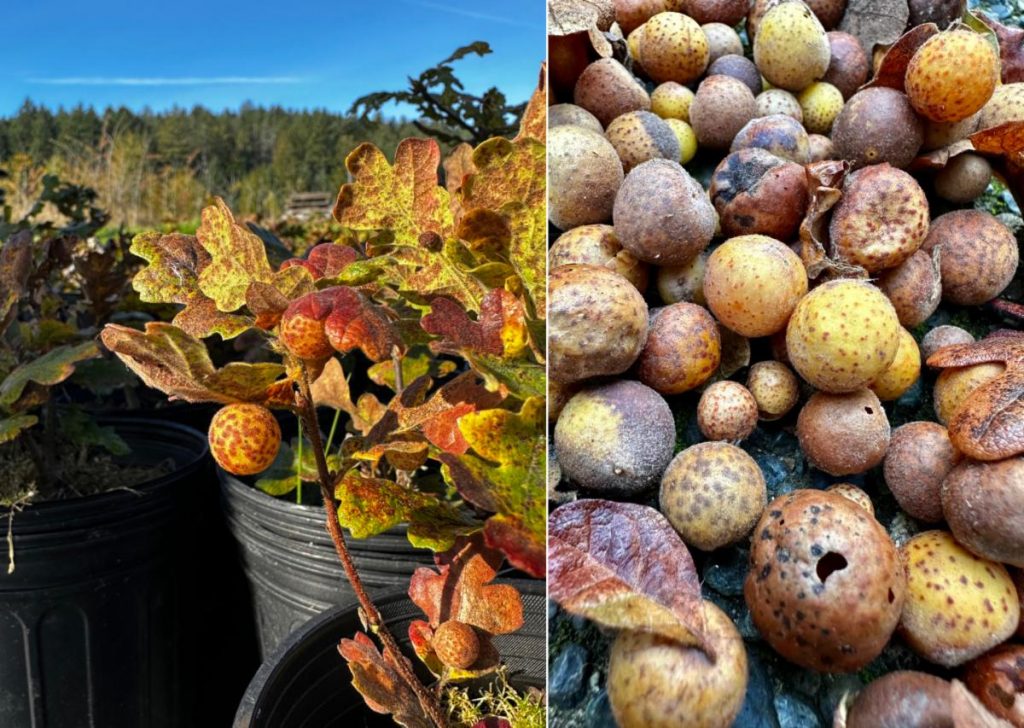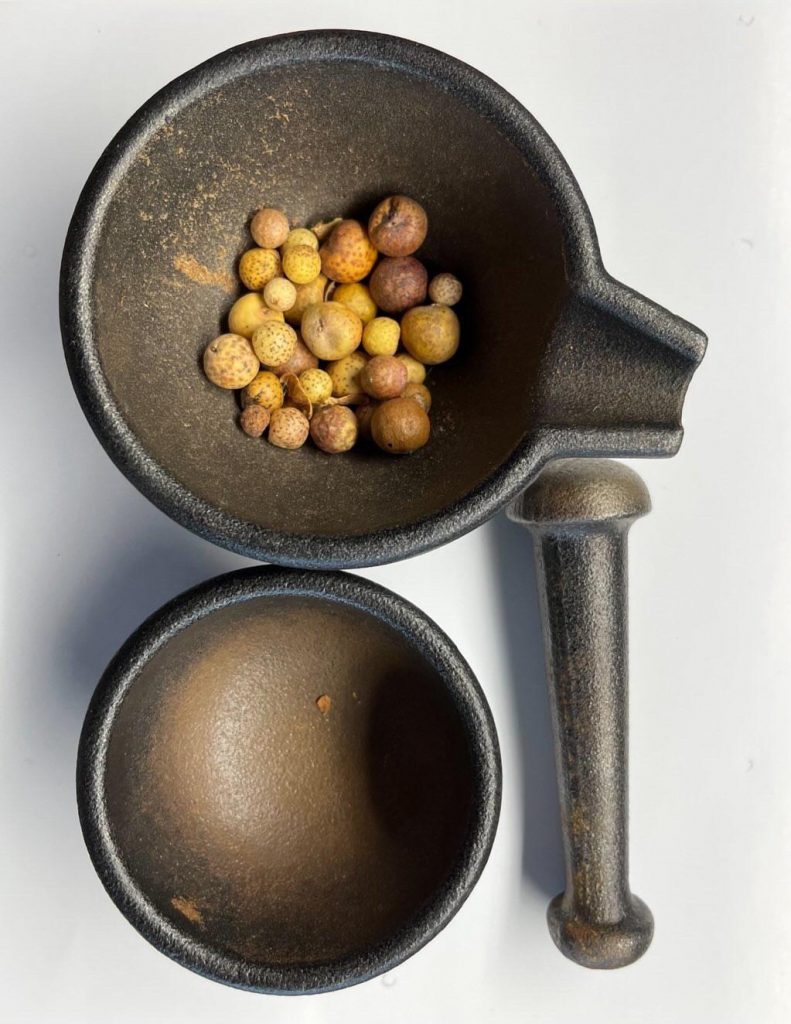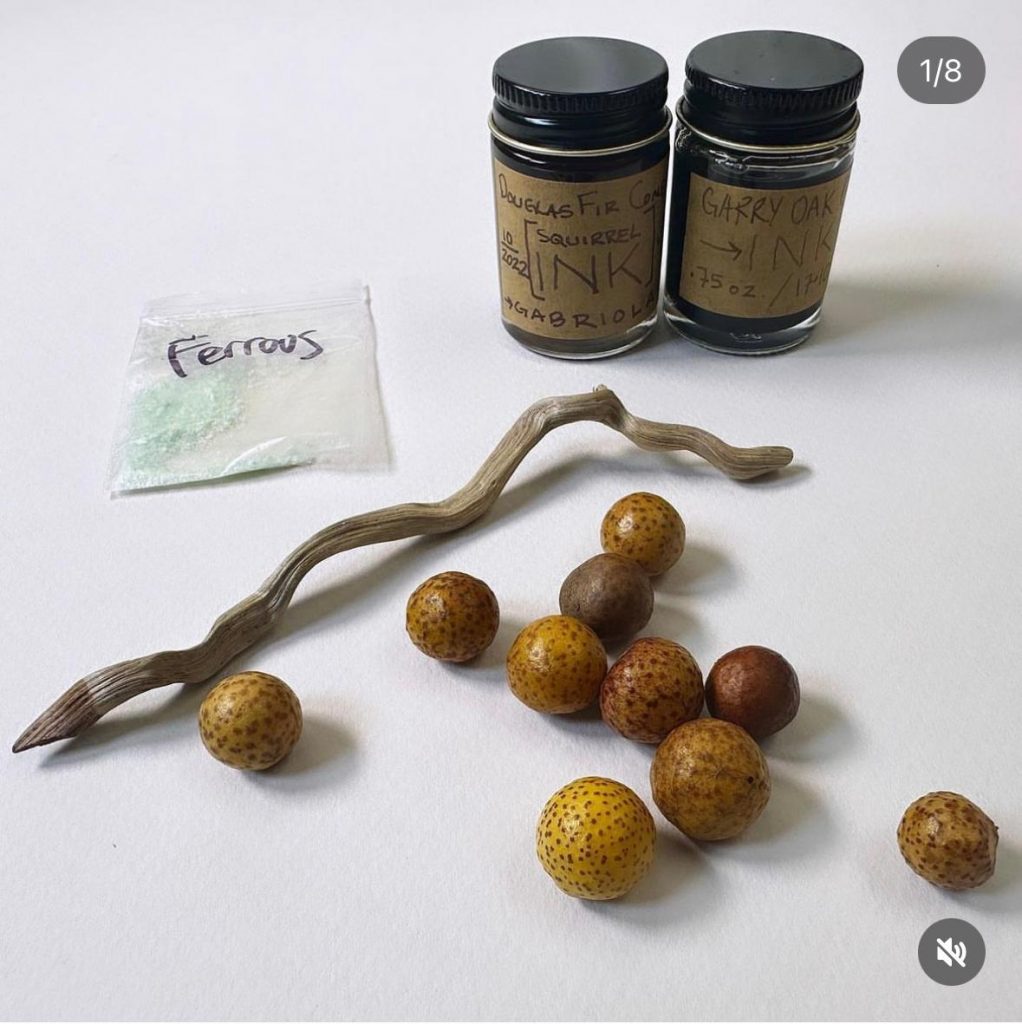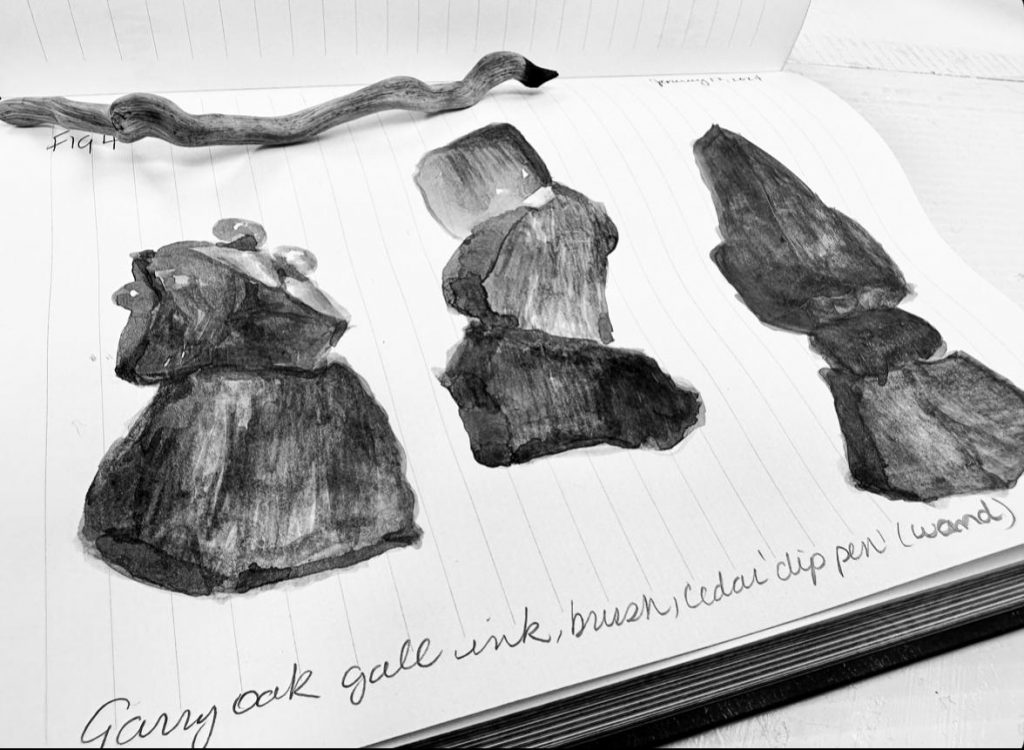Project Description
Magnetic Sympathy is an experimental technique for visualizing multispecies narratives and engages psychometry in the context of Intuitive Interspecies Communication (IIC) research.
Last year (2023), I was invited to participate in a symposium of experienced professional animal communicators as part of an ongoing research project at the University of Saskatchewan, directed by M.J. Barrett (PhD) studying Intuitive Interspecies Communication (IIC), partially funded by the Social Sciences and Humanities Research Council of Canada (SSHRC). The project examined ways in which IIC can help bridge the human-nature divide and support more respectful interactions with “wild” and domestic animals.
Magnetic Sympathy continues my artistic process of communicating with squirrels, now extending the exploration to gall wasps using intuition, touch, and chance during foraging as well as throughout the creative process in the studio. Here, I practice psychometry—the extrasensory perception, or clairvoyance, that comes from using my hands to collaborate through the materials gathered from a multispecies environment.
The word psychometry (or thought-transference) was coined by an American physician and professor of physiology at the Eclectic Medical Institute in Cincinnati, Ohio. Dr Joseph Rhodes Buchanan (1814–99) was one of many nineteenth-century scholars investigating the field. Originating from Greek language, psychometry translates to “soul measuring,” reflecting the human brain’s ability to perceive a subtle fluid or aura that permeates all elements in nature, preserving micrographic impressions of everything that has existed. This concept underscores the idea that nothing is lost; instead, everything is recorded in an energetic archive of time.
Our brains, similar to the energy of an electric charge, may operate in all the space around us and exist as a faint echo in space. For an experiment in thought transference, two agents are necessary to carry out this experiment: me and the gall wasps. It is believed that all objects absorb vibrations from the beings that interact with them. For instance, matter, such as oak galls, retains the memory of the gall wasp through vibrations. Our thoughts, as well as those of others, can influence the vibrational characteristics of nearby objects, while the vibrations inherent in materials, in turn, affect us. Described another way, each particle of inanimate matter possesses an aura capable of “communicating,” akin to an astral photograph capturing every event and scene that has transpired in its vicinity. Nature is filled with a “daguerreotype” of impressions containing all actions. Perhaps, then, Nature is the most skillful at assembling portraits and crafting a vast canvas that spans the material universe, preserving an archive of impressions reflecting all actions that have unfolded within it.
IIC experiment with gall wasps
Action: What can you do when you find an Oak gall ?
Look at the gall: If you find one tiny hole in the otherwise intact gall, it means that the wasp has eaten its way out of the gall and hatched.
Action: Garry oak galls (native) collected from the Garry Oak Meadow Preservation Society Nursery
Dates: Nov 2023, Feb 2024, April 2024, Sept 2024.
Action: Channel the species of oak gall wasps that emerged from oak galls while holding in hands.
Question: How did you co-evolve with Garry oak trees/white oak?
Images of thought: Our ancestors and same generation metamorphosis of leaf fibre, movement, motion, circular, sea anomie, burrowing, to mimic acorn, had a taste for the acorn as food, evolved learning from the oak tree, but originally used old acorn shells to reproduce. Use the same knowledge of the oak tree to create a nest—end of transmission.
Material experiments
In 2023, the Garry Oak Meadow Preservation Society (GOMPS) shared a fascinating photo of speckled gall wasps and their plant growths on Instagram. Artist Christi York saw the post and reached out to GOMPS Director and fellow artist Carollyne Yardley. Together, they collaborated on a unique oak gall ink research-creation project. The vacated oak galls were collected from the GOMPS nursery, and Christi transformed them into ink for early experiments on paper. This ancient technique is one of the oldest ways to make permanent black ink. The earliest recorded recipes come from Roman author and naturalist, Pliny the Elder. Many famous and important manuscripts have been written using ferrous oak gall ink, including the Codex Sinaiticus the Declaration of Independence, Da Vinci’s notebooks, Bach’s musical scores, Rembrandt’s drawings, Shakespeare’s plays, and the Magna Carta.
Both artists were drawn to creating drawings of different types of stones or rocks using the ink. Follow for more on this exciting project, including oak gall ink recipes GOMPS on Instagram @gomps_victoria Christi @york_christi and Carollyne @carollyneyardley
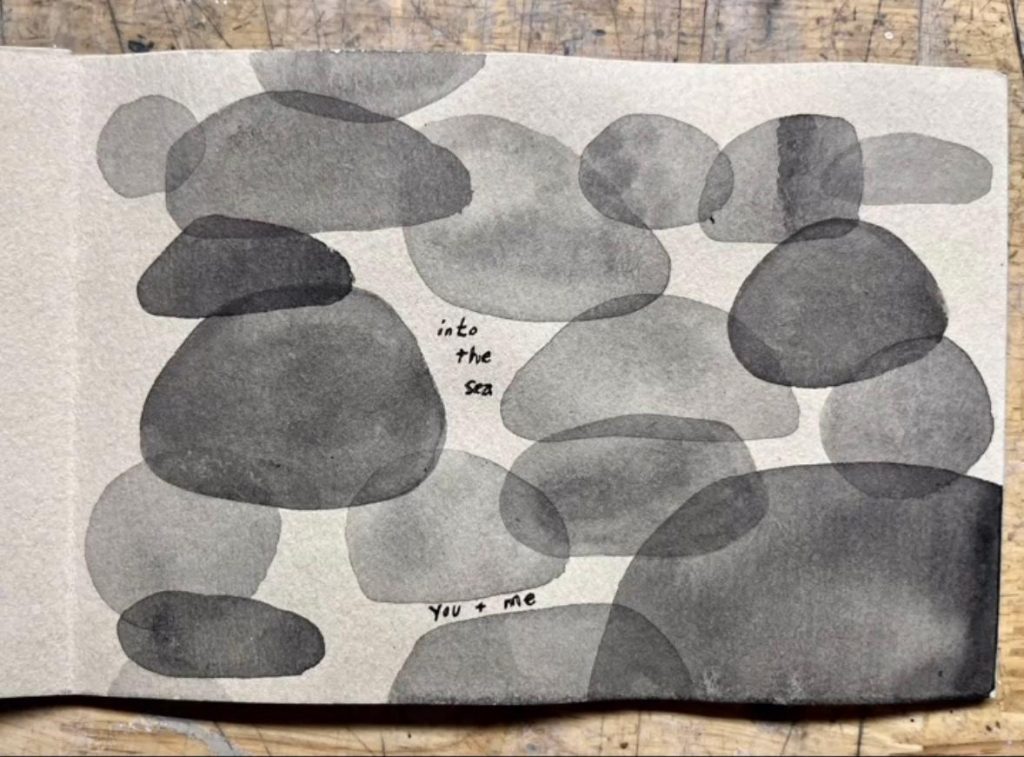
Photo by Martin Gisborne Instagram @martingisborne Indelible, Garry oak gall ink on paper, 2023 via Chrisi York Instagram@york_christi.
Notes
Galls are made of plant tissue and form when an insect secretes a chemical that causes interference with normal plant cell growth. Adults lay eggs in expanding tree buds and leaves in the spring. The larvae then feed, pupate, and emerge from the gall as adult wasps. Fortunately, galls do not cause significant damage to trees, although some leaves may drop prematurely.
Garry oak trees have evolved with hundreds of different insect species, as well as a number of micro-organisms, and it’s perfectly natural to see nibbled oak leaves or leaves with small holes in them. Large spherical galls (1–2 cm, ½–1″ “speckled oak leaf galls”) are caused by native gall wasps whose populations are kept in check by native parasitoids and do not pose a serious threat to Garry oak trees.
Native oak galls are different than jumping gall wasps. The jumping gall wasp is native to the western United States and is thought to have been recently introduced to British Columbia. Since its initial discovery in British Columbia near Victoria in 1986 (Thetis Lake) the area infested by the jumping gall wasp has steadily increased and now includes all of southeast Vancouver Island and Saltspring Island. The available evidence suggests the jumping gall wasp was inadvertently introduced here since no British Columbia record or specimen is known to exist prior to the initial discovery in 1986, despite extensive long-term surveys of insects occurring on Garry oak in British Columbia. Notably, in BC, Garry oak is the only tree on which the jumping gall wasp can complete its life cycle. The jumping gall wasp also lays eggs on a number of ornamental oak –– English oak, Quercus robur L; red oak, Quercus rubra L.; scarlet oak, Quercus coccinea Muenchh.; and pin oak, Quercus palustris Muenchh. — but fails to complete its development on these trees.
Resources
Duncan. R.W. Jumping Gall Wasp. Pacific Forestry Centre. Government of Canada. ISBN 0-662-25884-3 Cat. No. Fo 29-6/80-1997E
https://publications.gc.ca/collections/collection_2012/rncan-nrcan/Fo29-6-80-1997-eng.pdf
Garry Oak Ecosystems Recovery Team
https://goert.ca/gardeners-restoration/planting-caring-for-garry-oak-trees/


